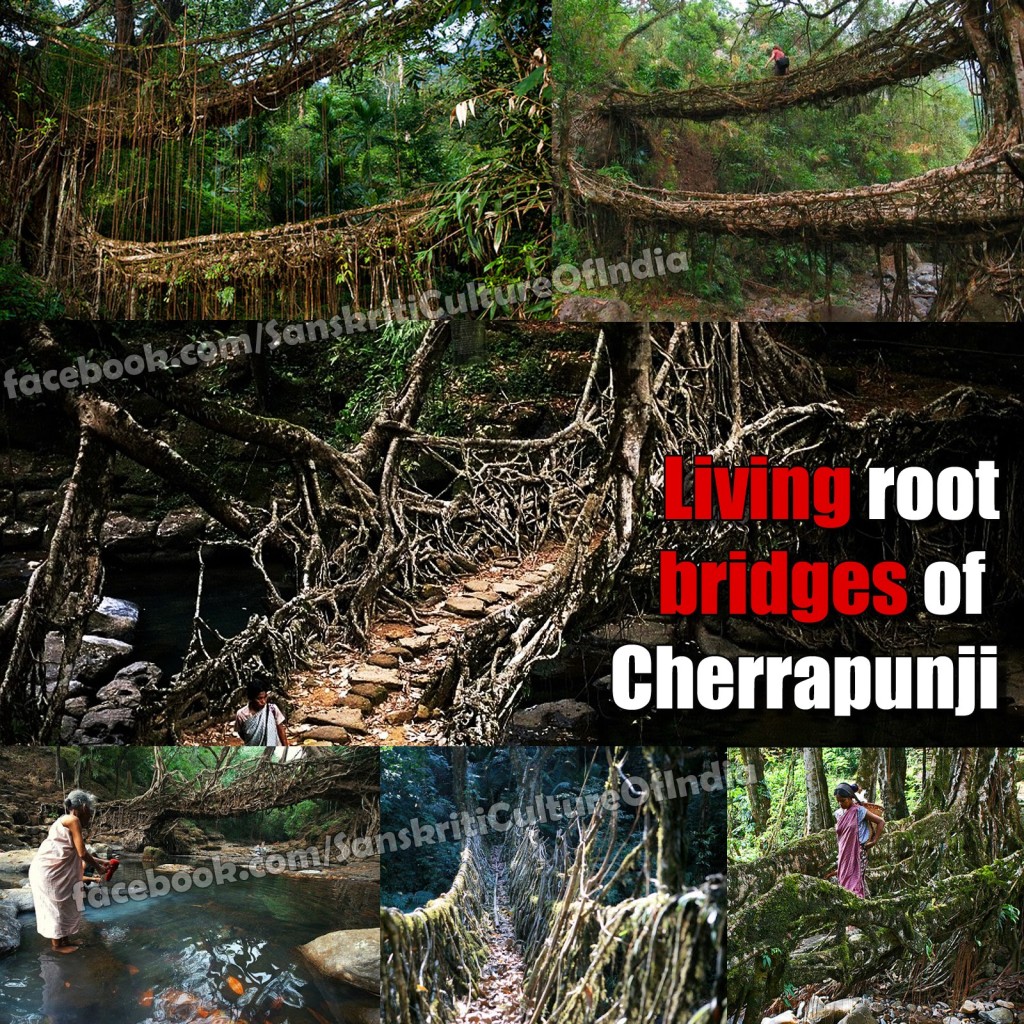In the depths of northeastern India, in one of the wettest places on earth, bridges aren’t built – they’re grown.
The living bridges of Cherrapunji, India are made from the roots of the Ficus elastica tree. This tree produces a series of secondary roots from higher up its trunk and can comfortably perch atop huge boulders along the riverbanks, or even in the middle of the rivers themselves.Cherrapunji is credited with being the wettest place on earth, and The War-Khasis, a tribe in Meghalaya, long ago noticed this tree and saw in its powerful roots an opportunity to easily cross the area’s many rivers. Now, whenever and wherever the need arises, they simply grow their bridges.In order to make a rubber tree’s roots grow in the right direction – say, over a river – the Khasis use betel nut trunks, sliced down the middle and hollowed out, to create root-guidance systems.Because they are alive and still growing, the bridges actually gain strength over time – and some of the ancient root bridges used daily by the people of the villages around Cherrapunji may be well over five hundred years old.One special root bridge, believed to be the only one of its kind in the world, is actually two bridges stacked one over the other and has come to be known as the “Umshiang Double-Decker Root Bridge.”











